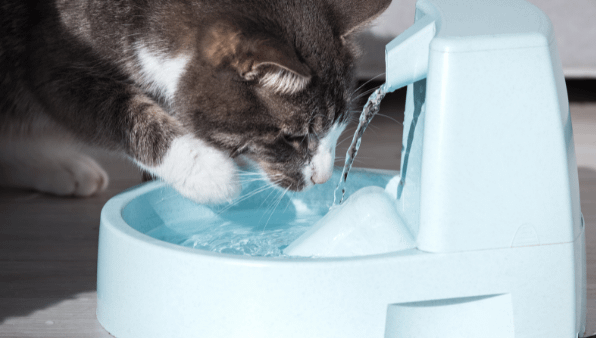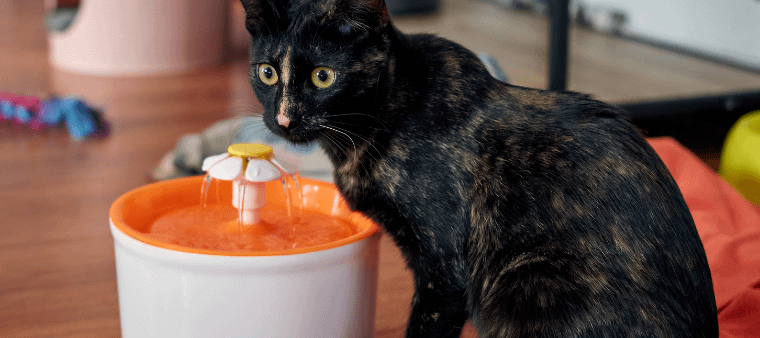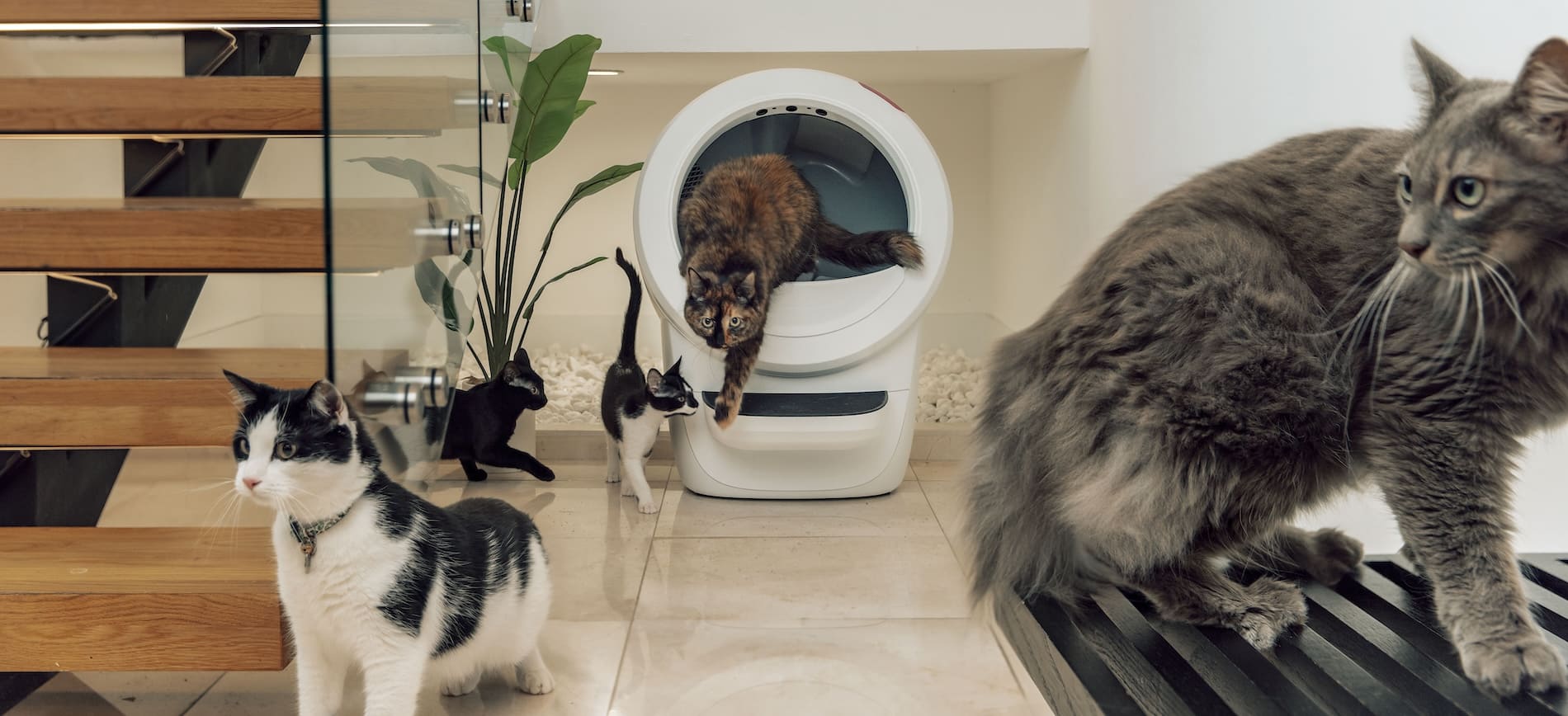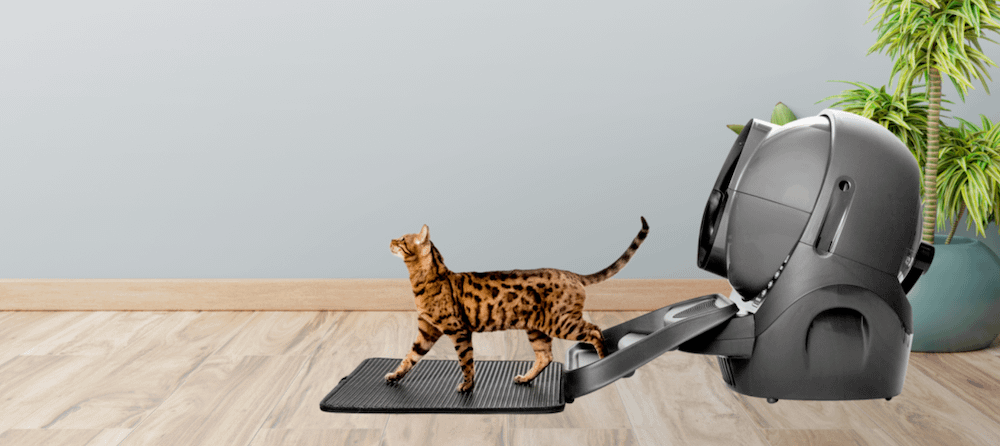Did you know that cats are at higher risk for chronic dehydration? You may be wondering, are water fountains good for cats? Or are cat water fountains safe? The good news is that cat water fountains are safe as long as the water level is monitored daily. If the fountain is empty for a long time but still running, it can burn out. It’s important to find the right cat water fountain and follow proper cleaning maintenance.
What are cat water fountains and how do they work?
A cat water fountain is simply a drinking fountain for cats. There are different types of fountains, including automatic, non-automatic, ceramic, plastic, and stainless steel.
Some fountains use filters and cycle water, while other fountains are similar to a water cooler at the workplace with a jug of water that gets refilled as needed. There are many options to choose from, and the best option for your cat will depend on what your cat personally prefers.
How to choose a cat water fountain
Finding the best cat water fountain that works for you and your cat can be a challenge. There are several factors to consider when choosing a drinking fountain for cats. Let’s take a closer look at the various features of common pet water fountains.
Size
It’s important to consider where you will put your cat’s water fountain. You’ll want to make sure that it fits comfortably in an area that is easily accessible for your cat because this will encourage your cat to use the water fountain. That said, you also don’t want to buy a large or bulky water fountain that takes up more space than necessary. It’s all about balance!
Filters
Regular tap water can contain trace amounts of toxins and chemicals. Therefore, it may be beneficial to find a cat water fountain that includes filters. This can help remove additional toxins and keep your cat’s drinking water safe.
Appearance
There are plenty of cat water fountains on the market, but you should try to find one that works for your household aesthetic. Additionally, some cats may be weary of a drinking fountain, so choosing one that isn’t visually overwhelming will be better for your cat.
Noise
Consider how much noise the water fountain will make. This is especially important if you plan on putting the water fountain in an area where you often entertain your guests. Electric cat water fountains tend to create more noise as is; if you have a skittish cat, check the reviews for better insight into the fountain’s noise level.
Materials
Knowing that there are many options on the market, you may want to decide which materials your cat’s water fountain is made of. Plastics can harbor more bacteria if the water is left sitting for too long, potentially leading to allergies for pets with sensitive skin. Some wood and stone materials can be porous and hold onto odors if not properly maintained. Luckily, there are many options to consider, including ceramic and stainless steel, which can make cleaning quick and easy.
Cost
A low-cost fountain may have a shorter lifespan and require regular replacement. A well-constructed pet fountain can be worth the investment, especially if the product will last longer, saving you money in the long run.
Convenience
Finding a cat water fountain that allows for bulk refills may actually end up saving you time when it comes to refilling and maintaining your cat’s water fountain. Also, finding a water fountain that is easy to clean can also help save you time.
Automatic water fountains and pet feeders like the Feeder-Robot are great options because they can help you save time and provide your pet with constant access to the essentials. For example, with anti-jam technology and a backup battery, the Feeder-Robot ensures that your pet never misses a feeding.
Do cats need a water fountain?
According to the Humane Society of Huron Valley, cats in the wild are instinctively drawn to moving water sources as they are generally safer and less likely to be contaminated than stagnant water. As a result, some cats might be more inclined to drink from a moving source because it mimics the sound and feel of rainwater or streams, which they might have encountered in their natural environment.
In addition, running water is often fresher and better oxygenated than still water, which may make it more appealing to cats in terms of taste.
Are water fountains good for cats?

There are many benefits that come along with using cat water fountains. For example, water fountains ensure that there will always be water available for your cat during the day, which will help to keep them properly hydrated. And some cats just prefer running water to stale, stagnant water in bowls!
Fresh water
Depending on the type of water fountain that you decide to purchase, you may end up with a fountain that only releases water as needed. This can help keep your cat’s water fresh and clean, which will also keep the bacteria buildup to a minimum.
Proper hydration
As mentioned above, most pet parents don’t realize that cats are at higher risk for chronic dehydration. Dehydration can lead to many health issues, including urinary tract infections and kidney disease. Drinking fountains for cats can improve hydration levels by providing water around the clock, and increased hydration can lead to greater nutrient absorption.
Increased nutrient absorption
Being properly hydrated can help your cat by aiding in his or her digestion. Making food easier to break down and digest will help increase your cat's nutrient absorption abilities. Proper hydration will also help you increase your cat’s saliva production, which can aid in breaking down foods.
Filters out toxins
As mentioned above, tap water can often contain toxins and chemicals that can pass by your city's filtration systems. Using a water fountain that comes with an additional filter can help you catch most of these toxins, making the water a lot safer for your cat to drink. Be sure to pay attention to how often you replace the filter, as this will factor into the cost of the water fountain you choose.
Keeps water cool
Another major benefit of most electric water fountains is that they will actually keep the water cool during the day. Cooler water is better for the health of your cat because it prevents bacteria from growing, whereas warm water allows for the growth of bacteria at a faster rate.
Are there downsides to a cat water fountain?
There are some downsides associated with cat water fountains. Being aware of the benefits and the drawbacks of a cat water fountain can help you decide which one you want to buy for your cat.
Plastics can harbor bacteria
If you decide to go with a plastic water fountain for your cat, it’s important to understand that many plastics can easily harbor the buildup of bacteria. This could mean more time spent maintaining your cat's water fountain, such as changing the filter, to make sure you’re keeping it as clean as possible.
Electricity hazard
Let’s say you’ve decided to focus on electric cat water fountains. Try to find an electric fountain that has an automatic shut-off feature in the event that any issues arise, like overheating or other product-related malfunctions. Just remember to proceed with caution when researching electric water fountains.
Mess
Some cats may not take well to a water fountain as a means of hydrating themselves. It may be more appealing for them to play in the water instead of drinking it. This can lead to more messes and more time spent cleaning up after your cat.
Luckily, a quality pet mat can help protect your flooring and make cleaning up easier on you.
Difficulty cleaning
Speaking of cleaning up, you’ll want to make sure you are properly cleaning your cat’s water fountain—and often—to minimize the likelihood of grime and bacteria buildup. Some water fountains are more complex to take apart, which can make cleaning them difficult for you.
If you aren’t cleaning your cat’s water fountain, bacteria can build up and ultimately cause skin allergies and other issues. Clean your fountain by following the manufacturer-provided instructions. Use all-natural cleaner wipes between deep cleanings.
As for how often to clean a cat water fountain, you should regularly check for residue build-up as well as algae or mold. In general, you can aim for a weekly clean.
Maintaining your pet water fountain
It’s very important to make sure you are cleaning your pet’s water fountain often. A clean fountain means your cat will have clean drinking water, which is beneficial for their health. You should aim to clean your cat’s water fountain at least once per week.
Be sure to change out the water fountain filters per the instruction manual. Some filters need to be changed every 2-4 weeks, while others only need to be changed every 1-3 months. Make sure you are following the directions specific to the water fountain you buy and changing them out when appropriate.
FAQs
Can water fountains make cats sick?
Cat water fountains are generally safe to use. However, it’s important to clean them regularly because bacteria can build up and cause skin irritation or other issues.
Where should you put a cat water fountain?
Make sure your cat water fountain is in a place that is easy for your cat to access. This will encourage them to use the water fountain more frequently.
Why is my cat water fountain slimy?
Your cat's water fountain could be slimy as a result of your cat's saliva. Another possibility is that a biofilm has developed naturally as a result of your cat using the fountain. This is normal, but it is still important to make sure you clean your cat’s water fountain regularly.
If you own multiple cats, read our guide on managing a multi-cat household to better suit feeding and drinking for your cats.
Source: Hydration





